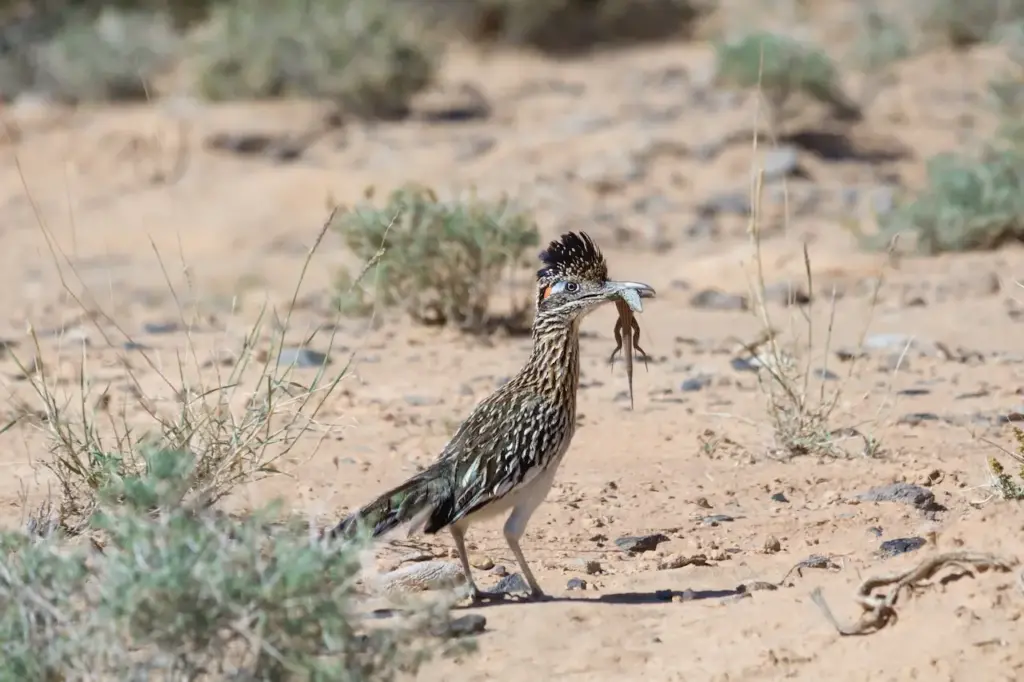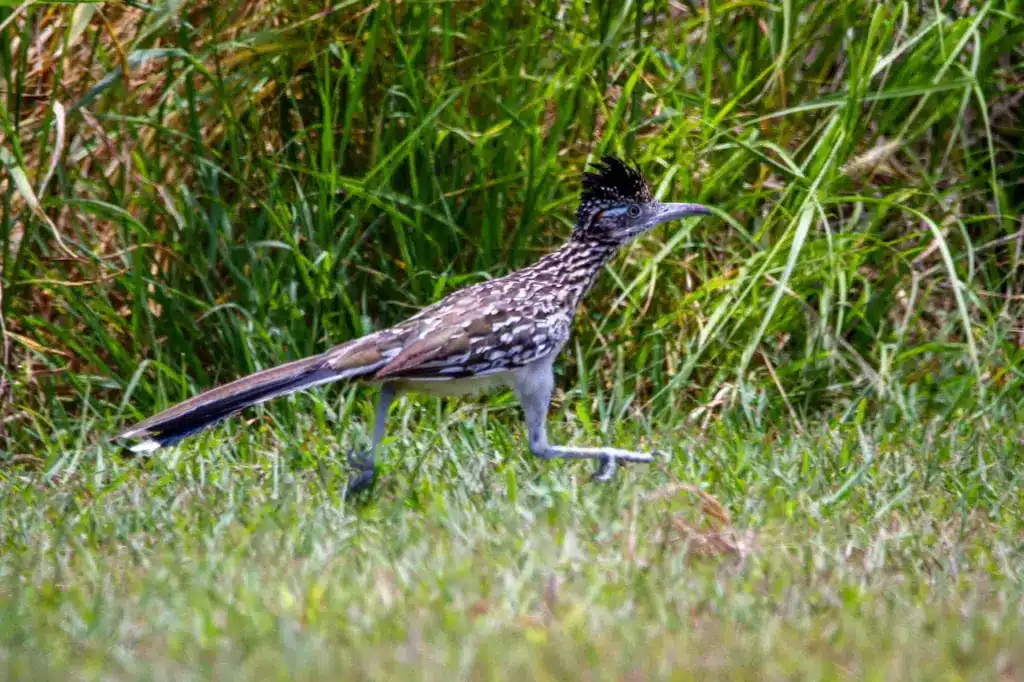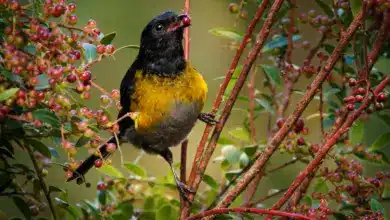The roadrunners are two species of bird in the genus Geococcyx of the cuckoo family, Cuculidae, native to North and Central America. These two species are the ground foraging cuckoos.
- Greater Roadrunner, Geococcyx californianus (southwestern United States)
- Conkling’s Roadrunner, Geococcyx californianus conklingi – prehistoric
- Lesser Roadrunner, Geococcyx velox (Mexico and Central America)

Morphology
Roadrunner species generally range in size from 18-24 inches in length from tail to beak. The roadrunner is large, slender, black-brown and white streaked ground bird with a distinctive head crest. It has long legs, strong feet, and an oversized dark bill. The tail is broad with white tips on the 3 outer tail feathers. They have a blank patch of skin behind the eye that is shaded blue proximally to red distally. The lesser roadrunner is slightly smaller, not as streaky, and has a smaller bill. They are large long-legged birds with long thick dark bills and long dark tails. They are terrestrial, and although capable of flight, they spend most of their time on the ground. During flight the wings are short and rounded and reveal a white crescent in the primary feathers. Roadrunners and other members of the cuckoo family have zygodactyl feet (two toes in front and two toes in back). Roadrunners are able to run up to 15 miles per hour and generally prefer sprinting to flying.
Songs
The roadrunner has a dove-like “coo” that is slow and descending.
- Link to a greater roadrunner call
Geographic range
The roadrunner is an inhabitant of the deserts of the Southwestern United States, Mexico, and Central America.
- Habitat: Roadrunners live in arid lowland or montane scrub and are often widely dispersed in the dry open country with scattered brush.
- Migration: Roadrunners are non-migratory birds that reside in their breeding area all year.
Food and foraging habits
Roadrunners are omnivores and are opportunistic. Their diet normally consist of insects (such as grasshoppers, crickets, catepillars, and beetles), small reptiles (such as lizards and snakes, including rattlesnakes), rodents and small mammals, tarantulas, scorpions, centipedes, spiders, small birds, eggs, nestlings, and fruits and seeds like prickly pear cactus and sumac. The lesser roadrunner eats mainly insects. Roadrunners forage on the ground usually running after prey under cover, they may leap to catch insects, and commonly batter certain prey, like snakes, against the ground.
Geococcyx sp. is the only real predator of the tarantula hawk wasps.
Behavior and breeding
Roadrunners are commonly solitary birds or live in pairs. They are monogamous and a pair may mate for life. Pairs may hold a territory all year. During the courtship display, the male bows, alternately lifting and dropping his wings and spreading his tail. He parades in front of the female with his head high and his tail and wings drooped. It has also been documented that the male may bring an offering of food to the female.
- Nest: Roadrunners nest are often on a platform nest composed of sticks (nest may sometimes contain leaves, snakeskins, or dung). The nest are commonly placed in a low tree, bush, or cactus.
- Clutch: Hatching is asynchronous and average a 2-6 egg clutch (the Lesser Roadrunners clutch size is typically smaller). Eggs are generally a white color.
- Parental care: Roadrunners have bi-parental care. Both sexes incubate the nest and feed the hatchlings, but males incubate the nest at night. For the first one to two weeks after the young hatch, one parent always remains at the nest. After the hatchlings are two to three weeks old they leave and never return to the nest. For a few days thereafter, the parents and young forage together.
- Reproductive Season: spring to mid-summer depending upon species and geographic location.
Thermoregulation
During the cold desert night the roadrunner lowers its body temperature slightly, going into a slight torpor to conserve energy. To warm himself during the day, the roadrunner exposes dark patches of skin on its back to the sun.

References
- The Illustrated Encyclopedia of BIRDS edited by Dr. Christopher M. Perrins ISBN 0-13-083635-4
- Grzimek’s Animal Life Encyclopedia edited by Michael Hutchins ISBN 0-7876-5785-9
- Handbook of Birds of the World edited by Josep del Hoyo et al. ISBN 84-87334-22-9
- Smithsonian: Birds of North America by Fred J. Alsop III ISBN 0-7894-8001-8
- Harrison, George. 2005. Comical Cuckoo. Birder’s World, 19:56-58.
- Meinzer, Wyman. 1993. Beep! Beep! Better pull over, folks-it’s the roadrunner. Smithsonian, 23: 58


